Vietnamese National Culture, the country of Vietnam has undergone thousands of years of history in establishing and defending itself, and through this, a very unique Vietnamese national culture has taken shape. This culture is the result of an entire process, the essence of history and the times. Let’s explore some of the distinctive features of this culture!
 1. Culture Formed from an Agricultural Economy-Vietnamese National Culture
1. Culture Formed from an Agricultural Economy-Vietnamese National Culture
Vietnam is an agricultural country, and agriculture plays an important role not only in the economic development of the country but also in shaping Vietnamese national culture. From ancient times to the feudal era, Vietnamese kings have always cared for agriculture, overseeing the state of the dikes, farming, and irrigation for the people. In the feudal era, there was a ranking of occupations based on value: “scholars-farmers-craftsmen-merchants,” with farming ranked only below the scholars, showing the importance of agriculture to the country.
Vietnam has a hot and humid climate, fertile soil, and rivers that bring nutrient-rich silt to the deltas, making them extremely suitable for wet rice cultivation. Thus, farming, especially wet rice cultivation, has always been the primary occupation for the majority of Vietnamese people, and Vietnam’s fragrant rice grains are now exported and renowned worldwide. This is why we often hear that Vietnam has a long-standing “wet rice civilization.”
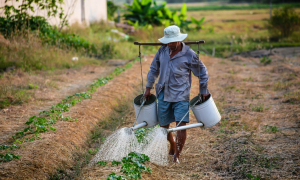
2. Family Values are Respected and Emphasized-Vietnamese National Culture
Family is where we are born and nurtured, so loving family members is a rightful duty, regardless of the country. In Vietnam, this cultural value is expressed through many aspects, from behavior to beliefs. Vietnamese people highly value respect and proper conduct, honoring elders, showing courtesy, and practicing filial piety are essential virtues. The Vietnamese also show affection for their ancestors through customs and ancestor worship rituals, as well as valuing graves and memorial days.
Vietnam has the legend of being “children of the Dragon and the Fairy,” symbolizing the unity of the Vietnamese people as siblings in one family, sharing a common origin and ancestry, and therefore needing to love and support each other.
3. Village Culture-Vietnamese National Culture
The village structure has a long history in Vietnam. A village is where people are born and live, often lovingly referred to as “hometown.” Each village consists of people living together in one area, connecting closely through aspects of daily life, from farming, raising livestock, working, to community activities. Each village has its own rules and regulations that clearly reflect autonomy and unity.
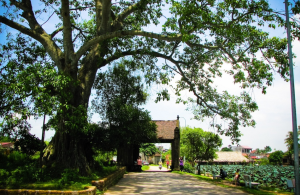
4. Language and Communication
The Vietnamese language is central to Vietnamese culture, marked by unique linguistic characteristics and communication styles that reflect deep cultural values. Vietnamese is a tonal language with six tones, meaning that the pitch or intonation can change the meaning of words. It uses the Latin alphabet with added diacritical marks, making it distinct among East Asian languages.
Politeness and respect are emphasized in communication, with formal language used when addressing elders and people in authority.
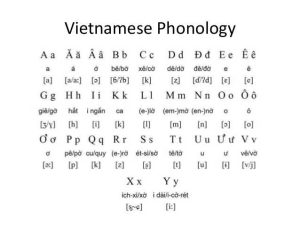
5. Festivals and Celebrations-Vietnamese National Culture
Vietnam’s culture shines during festivals, with Tết Nguyên Đán (Lunar New Year) being the most significant. Other important festivals include the Mid-Autumn Festival and the Hung Kings’ Temple Festival, each showcasing traditional performances, food, and rituals.
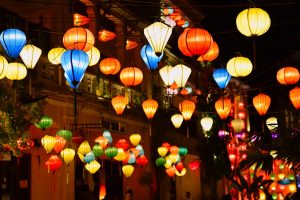
6. Cuisine-Vietnamese National Culture
Vietnamese cuisine is known for fresh ingredients, vibrant flavors, and balance. It features fresh herbs, fish sauce, and a mix of sweet, sour, salty, and umami tastes. Rice and noodles are staples, with dishes like pho (noodle soup) and banh mi (sandwich). Regional variations include spicier central dishes and sweeter southern flavors. Street food is integral, offering items like goi cuon (spring rolls) and banh xeo (crispy pancakes). Soups like bun bo Hue and desserts such as che (sweet soups) showcase the country’s rich culinary diversity.
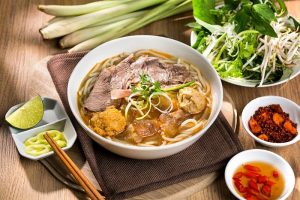
7. Religion and Spirituality
Vietnam has a diverse spiritual landscape, with Buddhism being the most widespread religion, often blended with ancestor worship. Confucianism influences social values like respect for elders, while Christianity, particularly Catholicism, has a notable presence. Folk religions, including Taoism and Cao Dai, are also practiced. Vietnamese spirituality emphasizes family, respect, and harmony among different beliefs.
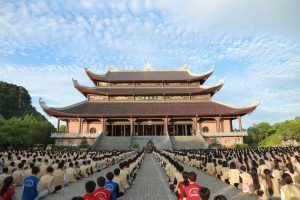
8. Clothing-Vietnamese National Culture
Traditional Vietnamese clothing is often colorful and practical, reflecting the country’s culture and climate.
- Áo Dài – The most iconic garment, the áo dài is a long, fitted dress worn by women, often with pants underneath. It symbolizes Vietnamese femininity and is worn on special occasions, including weddings and national holidays.
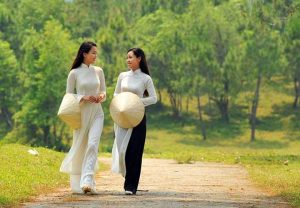
- Áo Tứ Thân – Worn by women in northern Vietnam, this traditional outfit consists of a four-piece garment, often paired with a headscarf, reflecting historical fashion.
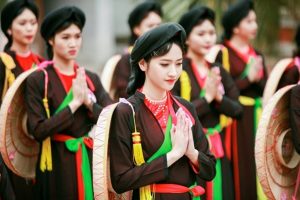
- Nón Lá – The conical bamboo hat, nón lá, is a well-known symbol of Vietnam. It provides protection from the sun and rain, and is still worn in rural areas.

- Casual Wear – In daily life, people wear modern, comfortable clothing like t-shirts, jeans, and dresses. The hot, humid climate influences light fabrics such as cotton and linen.
- Ethnic Minority Clothing – Vietnam’s ethnic minorities wear distinct, colorful garments reflecting their cultural identity. Each group has its own traditional dress, often worn during festivals and ceremonies.
Vietnamese national culture is shaped by a rich history, blending Confucianism, Buddhism, and local traditions. Its distinctive features include respect for family, ancestor worship, vibrant festivals, and a strong community spirit.
![]() Visa FOPA Company
Visa FOPA Company
📞+84 906 044 975 (Mr. Do)


